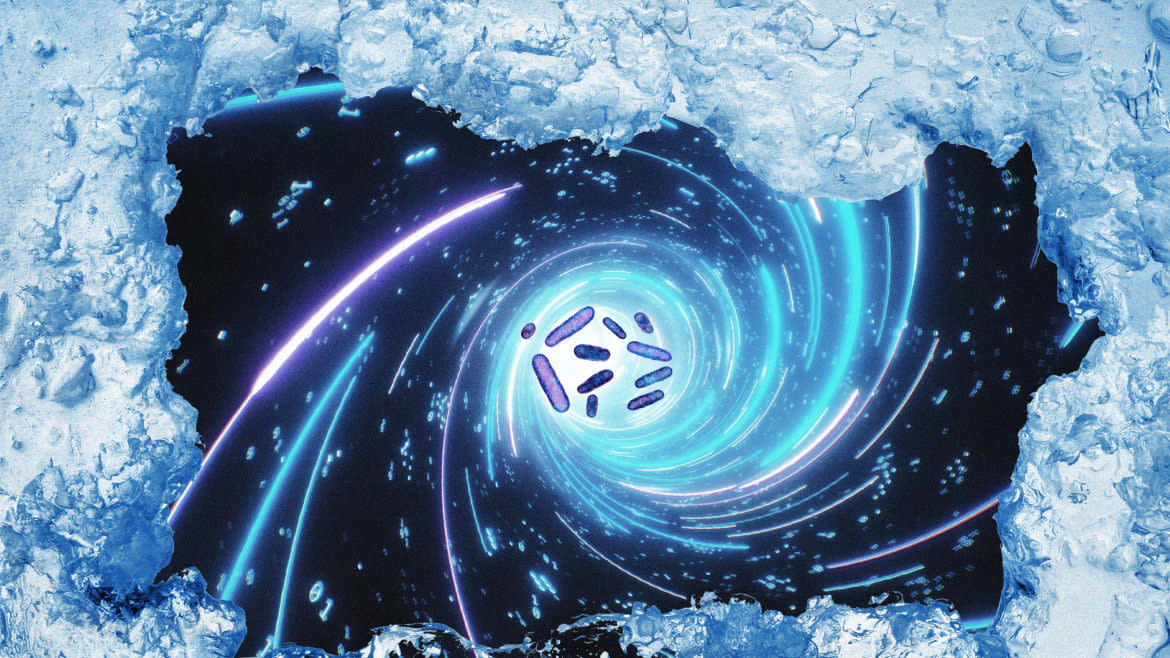How Climate Change Could Unleash ‘Time Traveling’ Diseases on Us

COVID has fallen out of the minds of most people, but the prospect of another pandemic hitting in the future looms large for some scientists. And that’s in great part because the worsening effects of climate change threaten to encourage a new kind of disease on the world—one that we may have very few defenses against, if any.
That fear is crystalized in a new study published Thursday in PLOS Computational Biology, which found that the rapid melt of permafrost due to rising temperatures could soon unleash ancient pathogens that have been frozen for a long time. While the vast majority of these microbes are probably unlikely to pose much of a threat, a few may have the potential of infecting other organisms in the surrounding environment, including humans. The devastation could be enormous.
“We know an incredible amount of potentially viable organisms are released from permafrost, but there has been no study to date on the ecological consequences,” Giovanni Strona, the study’s lead author, who works for the EU’s European Commission, told The Daily Beast. “This is what makes our work unique. Our results suggest that this might happen quite frequently, and that modern communities might be already strongly affected by ancient organisms released from melting ice.”
How Climate Change Could Lead to a New Pandemic
At first glance the study feels like the premise of a science fiction plot. That’s not a total accident. “I love science fiction,” said Strona. “The idea of ancient organisms waking up in modern communities is a fascinating one which has been around for a long time.” He has previously used artificial life simulations for other ecological investigations. At some point, said Strona, it struck him that he could use simulations to understand what might happen if pathogens local to a certain place and time found themselves in a totally different environment—perhaps simply shifted into the future.
Climate change was not the first motivation for study, but as Strona and his colleagues probed the questions further, “the more we realized that our study was not only unique, but also extremely worrisome. At some point, it was clear that science fiction was meeting reality,” he said.
Based on the “artificial life simulations” they ran, the team found that the pathogens that successfully thrived in the past were more likely to be successful in the modern day as well. “This is not good news,” said Strona, since it means those pathogens are probably much more abundant within the permafrost. Although they pose no risk to the surrounding environment if they lie dormant in the ice, that changes quickly once the ice is melted and the “time traveling” pathogens are resurrected here and now.
Could Cooling the Planet Through Geoengineering Lead to More Disease Outbreaks?
More specifically, the simulations suggest that about 3 percent of the unfrozen pathogens could become dominant in modern environments, and up to 1 percent could lead to unpredictable effects. That sounds like only a very small number of potential threats, right? But the simulations found that this 1 percent could kill off as much as one-third of infected host species. After all, as we learned during COVID, it only takes one nasty pathogen to wreak havoc on the world.
Moreover, the team found it very difficult to pinpoint what kinds of specific traits ancient pathogens may have to retain in order to be successful in the modern day. “We were expecting to find a clear ‘recipe’ for invasion success,” said Strona. “This was not the case… It is almost impossible to predict what would be the effects of an ancient invader on a modern community—even with good knowledge of the invader’s traits and the structure of the target community.” That means we’d have a very tough time trying to plan against such a threat.
Although the new study is based solely on simulations, they highlight a pretty alarming and underrated threat caused by climate change. The best strategy to prevent such a scenario is, of course, cutting greenhouse gas emissions so the ice doesn’t melt. If we don’t, rising sea levels and worsened storm events may only be the least of our worries.
Get the Daily Beast's biggest scoops and scandals delivered right to your inbox. Sign up now.
Stay informed and gain unlimited access to the Daily Beast's unmatched reporting. Subscribe now.

